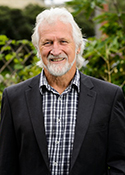Hunter
Margin: Labor 6.2%
Region: Hunter Region, New South Wales
In a nutshell: Joel Fitzgibbon’s safe Labor seat of Hunter has been drastically altered by a redistribution that took the scalpel to the neighbouring seat of Charlton.
Candidates in ballot paper order

|
RUTH ROGERS JOHN HARVEY JOEL FITZGIBBON ARJAY RASE MARTIN PETER MORRIS RICHARD STRETTON JOHN WARHAM CORDELIA TROY |
The most radical changes from the redistribution in New South Wales have been in the Hunter region, as the need to reduce the state’s parliamentary representation has been achieved through an effective merger of the seats of Hunter and Charlton. The resulting electorate carries over slightly more voters from Charlton (58,000 voters in urban territory on the western bank of Lake Macquarie) than Hunter (52,000 voters in and around the Hunter Valley centres of Cessnock, Singleton and Muswellbrook further to the north), but it is the former name that has been put out of commission, sustaining the Hunter electorate through a history going back to federation. From the old electorate of Hunter, around 40,000 voters in Kurri Kurri and western Maitland have been transferred to Paterson – an important development, since it turns the 9.8% Liberal margin there into a notional Labor margin of 1.3% – and 9500 in the rural north are ceded to New England. At the Newcastle end of Charlton, 26,000 voters around Wallsend have been transferred to the Newcastle electorate, and 18,000 around Cardiff and the northern shore of Lake Macquarie have gone to Shortland. The redrawn Hunter has a notional Labor margin of 6.2%, roughly splitting the difference between the 3.7% margin in Hunter and the 9.2% margin in Charlton at the 2013 election.
Hunter was held for the first term after federation by Australia’s first Prime Minister, Edmund Barton, and became a safe Labor seat from 1910 onwards on the strength of the area’s mining and industrial base. It was held from 1910 to 1928 by Matthew Charlton, who had a fruitless spell as Opposition Leader in his last six years in parliament, and then from 1958 to 1960 by another Labor leader in Bert “Doc” Evatt, who came seeking refuge after repeatedly being run close in his Sydney seat of Barton. Cessnock was the mainstay of the electorate as boundaries shifted over the years, from which it variously extended north into the Hunter Valley, east into Newcastle, or south to Lake Macquarie. The former orientation prevailed after 1984, when Charlton was created to accommodate the Lake Macquarie region. The more rural orientation of Hunter at that point slashed the Labor margin from 22.6% to 5.0%, but it remained in the fold by generally increasing margins over the decades that followed, before a 8.8% swing pared it back to 3.7% in 2013. Charlton was also consistently safe for Labor, providing a home for senior Rudd-Gillard government minister Greg Combet through his two terms in parliament from 2007 to 2013.
The electorate has been in the Fitzibbon family since 1984, being held first by Eric Fitzgibbon until 1996, and then by his son, Joel Fitzgibbon. The younger Fitzibbon survived the stigma of his close association with Mark Latham to emerge as Defence Minister when the Rudd government was elected in November 2007, but he resigned in June 2009 over a code of conduct breach. He had earlier received adverse publicity when it was learned Defence Department officials had security concerns over his and his father’s dealings with a Chinese-Australian businesswoman. During Labor’s second term, Fitzgibbon became notable as one of the most explicit advocates for Kevin Rudd’s return to the leadership. When this was accomplished in June 2013, he returned to cabinet as Agriculture, Fisheries and Forestry Minister, a portfolio he has retained in shadow cabinet.
The redistribution left Labor’s three Hunter region MPs chasing two remaining safe seats, presenting the Right-Fitzgibbon with a particularly acute problem arising from the Left’s control of local branches. There were suggestions he might be obliged to take on Liberal MP Bob Baldwin in Paterson, so that Hunter could go to Pat Conroy, the Left-aligned member for Charlton. However, Fitzgibbon’s difficulty was resolved by the retirement of Jill Hall in the southern Newcastle seat of Shortland, which became available to Conroy, and an arrangement that traded Hunter for Right faction acquiescence in deputy state leader Linda Burney’s claim on the Sydney seat of Barton. Both the Hunter and Barton preselections were enforced by the national executive, foregoing a vote by the local party membership.
Analysis by William Bowe. Read William’s blog, The Poll Bludger.


